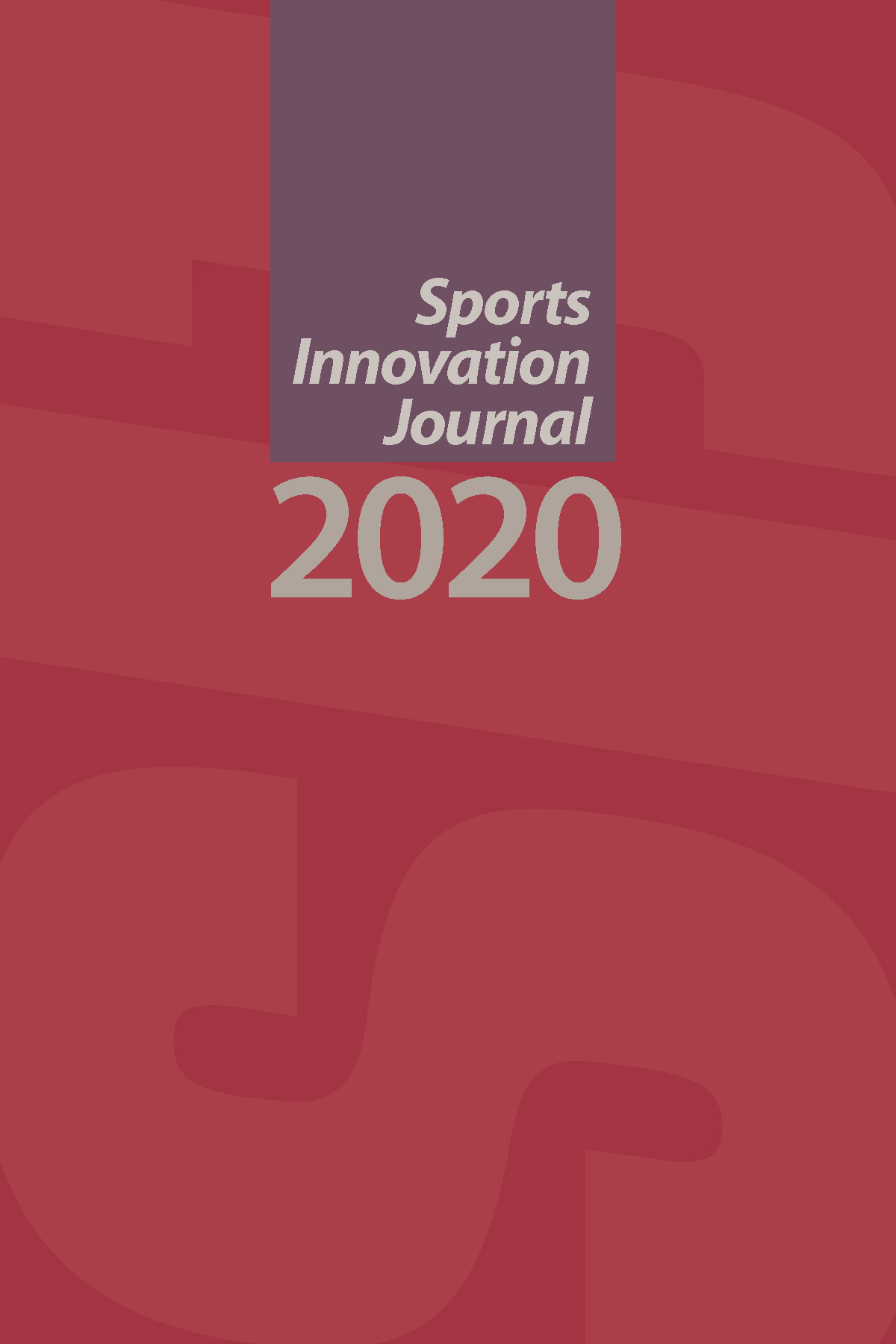Student-Athlete Development and Winning Success
An Analysis of Directors’ Cup Standings
DOI:
https://doi.org/10.18060/23755Keywords:
athletic trainers, college athletics, learning specialists, sport psychologist, winning, Directors' Cup, NCAAAbstract
The success of an athletic program is often defined by wins and losses. According to the sporting success framework (De Bosscher et al., 2006) as well as the athlete development literacy (ADL) model (Livengood et al., 2015), athlete development contributes to athletic achievement. The purpose of this study is to investigate the relationship between athlete development personnel resources and winning success at NCAA Division I institutions. A total of 150 universities were included in this study. Utilizing the ADL model (Livengood et al. 2015) of personal and player development literacies, athletic department personnel selected for this study included: academic advisors, athletic trainers, doctors, learning specialists, nutritionists, mental health professionals, physical therapists, sport psychologists, as well as strength and conditioning coaches. Winning success was measured using the final 2017-18 Learfield IMG Directors’ Cup standings (Directors’ Cup, 2019). The results suggest that athletic trainers, learning specialists, and sport psychologists significantly contribute to winning success. As such, athletic departments should appropriately invest in athlete development specialists.
References
Bell, L. F. (2009). Examining academic role-set influence on the student-athlete experience. Journal of Issues in Intercollegiate Athletics, 19(4), 19-41.
Brewer, R. M., McEvoy, C. D., & Popp, N. (2015). Predicting intrinsic value of NCAA Division I men's basketball coaching salaries. Journal of Issues in Intercollegiate Athletics, 8, 74-91.
De Bosscher, V., De Knop, P., Van Bottenburg, M., & Shibli, S. (2006). A conceptual framework for analysing sports policy factors leading to international success. European Sport Management Quarterly, 6, 185–215.
Fort, R. (2016). College athletics spending: Principals and agents v. arms race. Journal of Amateur Sport, 2(1), 119-140.
Hayden, L. A., & Lynch, M. (2011). The role of ATs in helping coaches to facilitate return to play. International Journal of Athletic Therapy & Training, 16(1), 24-26.
Hootman, J. M., Dick, R., & Agel, J. (2007). Epidemiology of collegiate injuries for 15 sports: Summary and recommendations for injury prevention initiatives. Journal of Athletic Training, 42 (2), 311-319.
Huml, M. R., Pifer, N. D., Towle, C., & Rode, C. R. (2019). If we build it, will they come? The effect of new athletic facilities on recruiting rankings for power five football and men's basketball programs. Journal of Marketing for Higher Education, 29(1), 1-18.
Humphreys, B. R., & Mondello, M. (2007). Intercollegiate athletic success and donations at NCAA Division I institutions. Journal of Sport Management, 21(2), 265-280.
Humphreys, B. R., Paul, R. J., & Weinbach, A. P. (2016). Performance expectations and the tenure of head coaches: Evidence from NCAA football. Research in Economics, 70(3), 482-492.
Learfield IMG. (2019). About. Retrieved from https://thedirectorscup.com/about/.
Livengood, T., Hilliard, J., Martin, K., Darvin, L., & Sagas, M. (2015). What is athlete development literacy?. Retrieved from http://laadr.hhp.ufl.edu/wp-content/uploads/what-is-athlete-development.pdf.
Mulholland, S. E., Tomic, A. S., & Sholander, S. N. (2014). The faculty Flutie factor: Does football performance affect a university's US News and World Report peer assessment score?. Economics of Education Review, 43, 79-90.
NATA. (2019). Athletic training glossary. Retrieved from https://www.nata.org/about/athletic-training/athletic-training-glossary.
National Collegiate Athletic Association. (2018). 2018-2019 NCAA Division I Manual. Indianapolis: IN: The National Collegiate Athletic Association.
Omondi-Ochieng, P. (2018). Resource-based theory of college football team competitiveness. International Journal of Organizational Analysis. Advanced online publication. https://doi.org/10.1108/IJOA-04-2018-1403
Paule-Koba, A. L., & Farr, N. E. (2013). Examining the experiences of former D-I and D-III nonrevenue athletes. Journal of Issues in Intercollegiate Athletics, 6, 194-215.
Pope, D. G., & Pope, J. C. (2009). The impact of college sports success on the quantity and quality of student applications. Southern Economic Journal, 75, 750–80.
Pope, D. G., & Pope, J. C. (2014). Understanding college application decisions: Why college sports success matters. Journal of Sports Economics, 15, 107–31.
Portenga, S. T., Aoyagi, M. W., & Cohen, A. B. (2017). Helping to build a profession: A working definition of sport and performance psychology. Journal of Sport Psychology in Action, 8(1), 47-59.
Smart, D. L., & Wolfe, R. A. (2000). Examining sustainable competitive advantage in intercollegiate athletics: A resource-based view. Journal of Sport Management, 14(2), 133-153.
Steinberg, M.A., Walther, C., Herbsy, M., West, J., Zamagias, D., & Smith, J. (2018). Learning specialist in college athletics: Who are they and what do they do? Journal of Higher Education Athletics & Innovation, 1(4), 77-118.
Stokowski, S., Rode, C. R., & Hardin, R. (2016). Academic advisors’ perceptions of student-athletes at NCAA Division-I institutions. The Journal of SPORT, 5(1), 5.
Stokowski, S. E., Dittmore, S. W., & Stine, G., & Li, B. (2017). Resource decisions in academic services: Which factors predict positive APR scores at NCAA Division I Institutions?. The Journal of Contemporary Athletics. 11(3), 173-188.
Wilson, M. (2017). NCAA Division I football coaching contracts: A comparative analysis of incentives for athletic and academic team performance from 2006, 2009, and 2011. Journal of Contemporary Athletics, 11(4), 237-255.
Won, D., & Chelladurai, P. (2016). Competitive advantage in intercollegiate athletics: Role of intangible resources. PloS one, 11(1), e0145782.
Additional Files
Published
Issue
Section
License
Copyright (c) 2020 Sarah Stokowski, Amanda Paule-Koba, Andrew Rudd, Alex Auerbach

This work is licensed under a Creative Commons Attribution 4.0 International License.
Copyright to articles published in Sport Innovation Journal is retained by the author(s).


